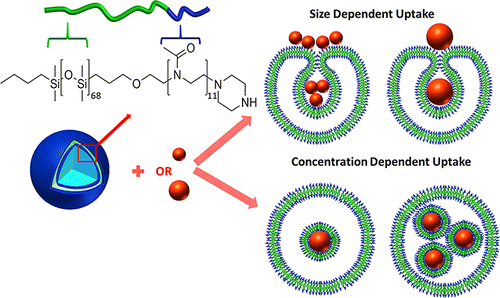
Because of the rapidly growing field of nanoparticles in therapeutic applications, understanding and controlling the interaction between nanoparticles and membranes is of great importance. While a membrane is exposed to nanoparticles its behavior is mediated by both their biological and physical properties. Constant interplay of these biological and physicochemical factors makes selective studies of nanoparticles uptake demanding. Artificial model membranes can serve as a platform to investigate physical parameters of the process in the absence of any biofunctional molecules and/or supplementary energy. Here we report on photon- and fluorescence-correlation spectroscopic studies of the uptake of nanosized SiO2 nanoparticles by poly(dimethylsiloxane)-block-poly(2-methyloxazoline) vesicles allowing species selectivity. Analogous to the cell membrane, polymeric membrane incorporates particles using membrane fission and particles wrapping as suggested by cryo-TEM imaging. It is revealed that the incorporation process can be controlled to a significant extent by changing nanoparticles size and concentration. Conditions for nanoparticle uptake and controlled filling of polymersomes are presented.
From: Karmena Jaskiewicz, Antje Larsen, David Schaeffel,
Kaloian Koynov, Ingo Lieberwirth, George Fytas,
Katharina Landfester, and Anja Kroeger
“Incorporation of Nanoparticles into Polymersomes: Size and Concentration Effects”
ACS Nano
6(8), 7254-7262 (2012).

